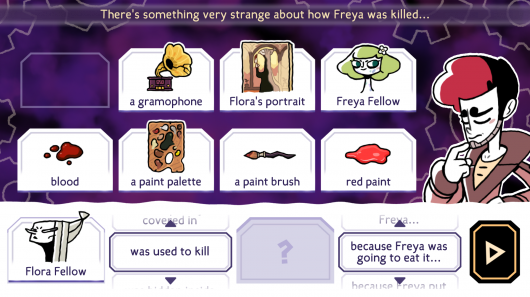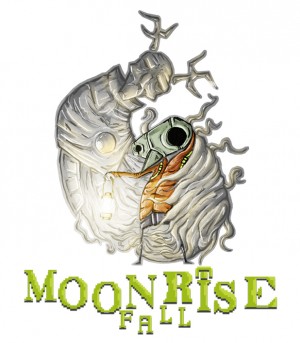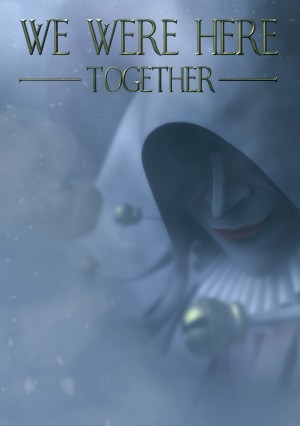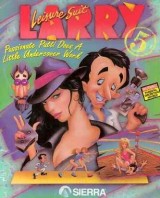Review for Tangle Tower
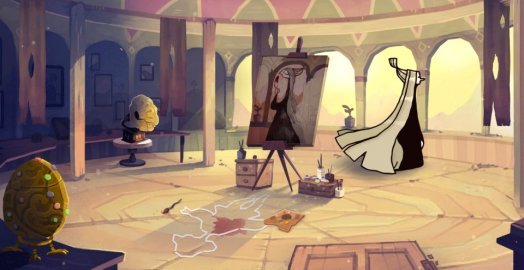
In another life, I like to imagine myself as a detective. I don’t do well with gore, nor do I like the idea of being chased or shot at, so I’m not thinking along the lines of Dirty Harry. Instead, I’d like to visit an intriguing location, hunt around for clues, talk to a cast of colourful characters, and use my powers of deduction to piece everything together, all the while accompanied by a companion to help keep the investigation entertaining. I’d pretty much want to be in the world of Tangle Tower.
Tangle Tower is the third entry from developer SFB Games in this series. First there was a free online debut Detective Grimoire, then 2014’s light and enjoyable commercial follow-up Secret of the Swamp, and now this one arriving half a decade later. All three adventures share the same gameplay style and lead character but are standalone experiences. You don’t need any knowledge of Tangle Tower’s predecessors to jump straight in – though there’s no harm in doing so, not only because they’re great in their own right, but because eagle-eyed players will notice some subtle story links between them.
If you have played the previous games, you can expect similar things here. Mechanics have been streamlined, the artwork is even better, but the bones remain unchanged. That’s certainly no bad thing; if you liked its predecessors, there’s no reason why you wouldn’t have a good time with Tangle Tower as well. Either way, you’ll find a murder mystery that will hook you with its premise, captivate you with its visuals and music, and leave you smiling, even if the pacing is a little off in places.
The game is named after the location in which it takes place. Surrounded by purple water and looming cliffs, it’s a lone mansion that has a pair of turrets that look like they have scoops of ice cream on top. Each houses members of the Fellow and Pointer families, who have built up some not-so-secret resentment for one another, compounded by the isolated close-quarter proximity to one another. Perhaps tensions between them have finally boiled over as our two leads, Detective Grimoire and Sally, have been called to the island to investigate a homicide.
You soon discover, however, that even the question of whether a human did the killing is up for debate. Is it possible to be murdered by a painting? Logic would dictate not, but Freya Fellow died whilst painting a portrait of her relative Flora. She was found lying on her back, a single stab wound in her chest, and no weapon was discovered at the scene… except the one on the unfinished canvas in front of her, where the subject is holding a knife covered in genuine blood.
So maybe Freya was killed by the painting? It’s a theory proposed by Detective Grimoire in the opening. “Case closed,” he declares confidently. With his bouffant red-and-black hair, collar upturned on his overcoat, and huge belt buckle, Grimoire is a unique-looking sleuth. He’s thorough and witty, but he can be a bit simple sometimes. “The case is not closed,” counters Sally. She’s the sidekick, though she might not appreciate the term, cool as a cucumber with dominating green hair lending an equally curious appearance. Sally keeps Grimoire in check, stepping up to offer a different perspective on proceedings – or at least some much-needed sense.
Together, Grimoire and Sally make a great duo, bouncing off each other nicely. For example, a brief dialogue exchange sees the former play hardball with a stuffed bear, while the latter roleplays and adopts a high-pitched voice to plead innocence on the toy’s behalf. Grimoire may be more outwardly playful, but Sally is quick to offer a sarcastic quip or show mischievous cheek. The pair are not afraid to rib one another either, though Grimoire is more often on the receiving end. When he looks at a blackboard full of equations, Sally warns him not to look too closely lest he get a headache. Gentle jokes at each other’s expense aside, I liked that they got on well and that they’re competent at their jobs. I never tired of their company.
Every detective worth their salt knows that clues and testimony help solve a case. As such, most of your time in Tangle Tower is spent inspecting objects in the environment or talking to the weird and wonderful members of the Fellow and Pointer families. As you work through the mansion, you don’t directly control either protagonist (it’s clear this was designed for touch devices rather than PC, right down to the fact that you must force-close the application to exit the game). Instead, you bring up a map and click the place you want to visit, with the movement visualised by cute little caricatures. Should you ever find yourself stuck, though it’s unlikely to happen, click the lightbulb to get a suggestion on where to go. Once you arrive somewhere you see a mostly static shot of the room, though there’s always some welcome animation like the flicker of a candle or the flutter of a bird.
The locale may not sound particularly noteworthy visually, but the painterly cartoon artwork is wonderful. The 2D landscapes fill the screen, composed of blocky, whimsical shapes and just the right amount of detail. Every scene is so vibrant and enchanting that it lends a magical quality to the entire experience. Take the music room, soaked in green, with colourful lampshades hanging from the ceiling and huge windows casting imposing shadows. Or the greenhouse, with patterned fruit hanging from trees, blue glows from the soil creating an unearthly feel. And there’s the rooftop garden, with its arched bridge, rose bushes and animal statues forming a setting that looks perfect to relax in.
This is accompanied by some equally glorious music that sounds simultaneously unsettling and uplifting. The score layers all sorts of instruments orchestrally, from woodwind to string to percussion, and there’s even some vocals sprinkled in. What’s playing changes depending on where you are. For instance, in Flora’s coldly designed tower, the simple blowing wind and occasional chime set the atmosphere beautifully. Head into the greenhouse and the rattles and drums evoke the feeling of being in a rainforest. Then visit the music room, where a slow piano piece complements the moody surroundings. If I had to levy one criticism, it’s that not every location has a unique theme, so you might tire of hearing the same tunes repeatedly.
You can click on anything to have Grimoire and Sally comment along the way. There’s no indication of what is interactive, but the pair always have something to say, whether it’s a witticism (Sally says she used to have a small harp, Grimoire responds “Lyre,” and Sally promises it’s true), a deduction, or just a general observation. You’ll have to click everything out of necessity anyway, not just because it’s amusing to hear the banter, but because sometimes an object will get filed as a clue – even things like four bright feathers, a cracked cassette tape, and a potted flower. It won’t always be immediately obvious what their purpose is, but you can refer to everything in your case file at any time for a memory refresh.
Many areas also have a mechanical puzzle within, usually a locked container that needs opening to discover a clue. Unlike Professor Layton, where puzzles often have little relevance to the story, here they are integrated cleverly and feel relatively natural, like the gardener’s lockbox that requires a leaf symbol combination or the astronomer’s planet structure that must be rotated to cast specific shadows. I was impressed by how different all the obstacles are. Each is unique, and you’ll need to engage different parts of your brain to crack them; sometimes even understanding the aim of a puzzle is a challenge. These are by far the most taxing part of the game. While not overly difficult, and you do get a clue if you keep submitting wrong answers, a few had me scratching my head for a while. Nevertheless, they never veer into frustration, and it was genuinely satisfying every time I completed one.
As you roam around the mansion, you’ll encounter its larger-than-life inhabitants, each with their own quirks. You’ll need to talk to them to find out more about their lives, what they were doing the day the crime took place, and how they found out about the murder. These few prompts are the same for everyone, and there are no dialogue trees, but it’s a pleasure to sit back and listen since everyone is distinct in personality and perfectly voiced. There’s not a single dud among them, expressing everything from exasperation to pomposity to angst with ease.
The writing is great on its own, but the actors elevate it to a new level. Poppy Pointer sounds every bit like the moody teenager she is, while Fifi Fellow’s chirpy and pointed tones fit well with her scientific background. Elsewhere you’ll find the bird-obsessed Penelope Pointer, who not only has one perching on her head but is also wearing a set of wings; the green-thumbed Fitz Fellow, a looming and sombre presence who is more comfortable with his plants than people; and Hawkshaw, a rival detective on her own mission, whose stylish dark bob and swishing red cloak are the envy of Sally. These are just a small sample of the diverse cast and I was excited to meet all of them.
As you chat with these exaggeratedly-drawn folks, larger versions of their character models are overlaid on the screen with thick white outlines that curiously wiggle. They’re all very expressive and gesture fluidly, their bodies, arms, and hair swinging with every motion. There’s subtle movement too, like the scratch of a chin, the furrow of a brow, or the devious side-eye that tells you everything you need to know about what they’re thinking. While there are only a limited number of movements per character, the dialogue moves so briskly that it never really matters.
Though I never completely tired of talking to these people, the pacing of the game does suffer around the halfway point. By this time you’ll have met everyone and established a large bank of clues. You can then present these clues to hear what others say about them. I found myself going back to everyone, clicking the same clues in turn to see if anything came from it, which grew a bit tiresome. There was also the odd occasion when dialogue didn’t reflect the fact that Grimoire and Sally had already solved something.
Once you’ve gathered enough clues, you can then cast suspicion on someone by confronting them directly. This involves building sentences from a set of choices, piecing together clues and statements to establish a connection. You can make some of them sound silly if you like (“Fifi didn’t want anyone to see Poppy buried in the garden”) when Grimoire and Sally will read them out, but there’s only ever one correct answer. Outside of the puzzles, much of the game leans towards visual novel territory, so these moments of active engagement are refreshing. They’re simple fare, but hearing the ‘ding’ when you get the right sentence structure is rewarding.
If there’s one thing that might stop me from ever fulfilling my detective dream, it’s that I’ve never been very good at figuring out the ‘who’ in whodunnit. I like to tell myself that’s because I enjoy going along for the ride and relishing in the shock reveal, though that’s probably only partly true. While I had an inclination about the solution to Freya Fellow’s death, the actual conclusion here is surprising, although mostly because it’s a bit convoluted and rushed. If you think about it for more than a moment, it stretches the realm of believability and I didn’t feel like it totally capitalised on certain story elements. That said, I enjoyed the last act build-up to it, and it didn’t hamper my overall view of the game.
It takes around six hours to complete Tangle Tower, providing you spend time checking everything out – and I recommend you do. Though I would have happily devoured more, the length felt right considering the scale of the game. I hope it doesn’t take another five years before we join Detective Grimoire on a new mission. Place him in another fantastical situation and I’ll be there in a heartbeat. For now, I’m happy to recommend that fellow adventure gamers and mystery lovers allow themselves to get sucked into the wacky premise of Tangle Tower, stay for the heart and humour, ponder the puzzles, and delight in the audio-visuals along the way. Case closed.
WHERE CAN I DOWNLOAD Tangle Tower
Tangle Tower is available at:
- GOG -80%
- Itch.io -80%
- Steam
- HumbleBundle








